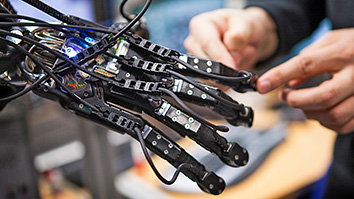Citation
Luong, Q.-T. and Faugeras, O. D. The Fundamental matrix: theory, algorithms, and stability analysis. International Journal of Computer Vision, vol. 17, no. 1, pp. 43-76, 1996.
Abstact
In this paper we analyze in some detail the geometry of a pair of cameras, i.e., a stereo rig. Contrarily to what has been done in the past and is still done currently, for example in stereo or motion analysis, we do not assume that the intrinsic parameters of the cameras are known (coordinates of the principal points, pixels aspect ratio and focal lengths). This is important for two reasons. First, it is more realistic in applications where these parameters may vary according to the task (active vision). Second, the general case considered here, captures all the relevant information that is necessary for establishing correspondences between two pairs of images. This information is fundamentally projective and is hidden in a confusing manner in the commonly used formalism of the Essential matrix introduced by Longuet-Higgins (1981). This paper clarifies the projective nature of the correspondence problem in stereo and shows that the epipolar geometry can be summarized in one 3×3 matrix of rank 2 which we propose to call the Fundamental matrix.
After this theoretical analysis, we embark on the task of estimating the Fundamental matrix from point correspondences, a task which is of practical importance. We analyze theoretically, and compare experimentally using synthetic and real data, several methods of estimation. The problem of the stability of the estimation is studied from two complementary viewpoints. First we show that there is an interesting relationship between the Fundamental matrix and three-dimensional planes which induce homographies between the images and create unstabilities in the estimation procedures. Second, we point to a deep relation between the unstability of the estimation procedure and the presence in the scene of so-called critical surfaces which have been studied in the context of motion analysis. Finally we conclude by stressing the fact that we believe that the Fundamental matrix will play a crucial role in future applications of three-dimensional Computer Vision by greatly increasing its versatility, robustness and hence applicability to real difficult problems.


